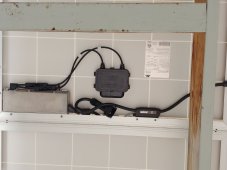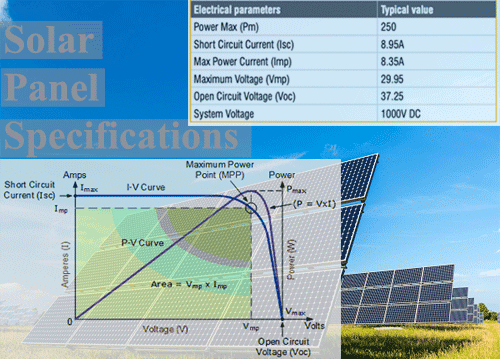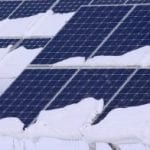My question is, what would it take to convert my system from grid tied to DC?
This post is me thinking out loud but asking for input to know if I am on the right track or missing some things.
In another question, I'm taking on the task of testing all of my panels and inverters (all listed in my signature).
The task is going to be a difficult one because of the way this system is mounted so I'm trying to figure out what my options are so I can limit the amount of times I'll have to get to each panel/inverter.
I use around 2KW 24/7 for a computer development environment that is connected to a UPS. My thought is that I might actually get more return from the system by using it to charge batteries and to run the dev env rather than getting the crummy retail rate I get from the power company.
I also like the idea of being able to actually use the system during grid outages.
Therefore, I could convert half of the system for example to DC, leaving the rest connected as it is.
No matter what I do, I still need to try and plan this. Let's say I went 100% batteries, no more grid tied at all.
Each panel is marketed as an AC one because there is an inverter mounted onto them. If I take the inverters out of the mix, then I now have panels that output DC.
I have 42 panels which are connected together in this way, 2 x 10 panel strings and 2 x 11 panel strings.
These lead to four breakers just before the power company's second meter for my solar.
What I'm thinking is that I would rewire the system so that each sting is a series that outputs a total of X.
At the junction box, I would have four DC outputs once re-wired.
At this point, I suppose it depends on a number of things.
I could get four smaller inverters that tie together to give one final output.
I could get two smaller inverters that tie together to give one final output.
I could get one inverter that has multiple inputs
I've seen there are all kinds of options for inverters such as some that have everything built in, charge controller, inverter etc.
Or I might get separate devices.
The main thing I'm trying to better understand is dealing with the DC outputs to keep things safe.
If you were in my position, what would you be looking at?
This post is me thinking out loud but asking for input to know if I am on the right track or missing some things.
In another question, I'm taking on the task of testing all of my panels and inverters (all listed in my signature).
The task is going to be a difficult one because of the way this system is mounted so I'm trying to figure out what my options are so I can limit the amount of times I'll have to get to each panel/inverter.
I use around 2KW 24/7 for a computer development environment that is connected to a UPS. My thought is that I might actually get more return from the system by using it to charge batteries and to run the dev env rather than getting the crummy retail rate I get from the power company.
I also like the idea of being able to actually use the system during grid outages.
Therefore, I could convert half of the system for example to DC, leaving the rest connected as it is.
No matter what I do, I still need to try and plan this. Let's say I went 100% batteries, no more grid tied at all.
Each panel is marketed as an AC one because there is an inverter mounted onto them. If I take the inverters out of the mix, then I now have panels that output DC.
I have 42 panels which are connected together in this way, 2 x 10 panel strings and 2 x 11 panel strings.
These lead to four breakers just before the power company's second meter for my solar.
What I'm thinking is that I would rewire the system so that each sting is a series that outputs a total of X.
At the junction box, I would have four DC outputs once re-wired.
At this point, I suppose it depends on a number of things.
I could get four smaller inverters that tie together to give one final output.
I could get two smaller inverters that tie together to give one final output.
I could get one inverter that has multiple inputs
I've seen there are all kinds of options for inverters such as some that have everything built in, charge controller, inverter etc.
Or I might get separate devices.
The main thing I'm trying to better understand is dealing with the DC outputs to keep things safe.
If you were in my position, what would you be looking at?






